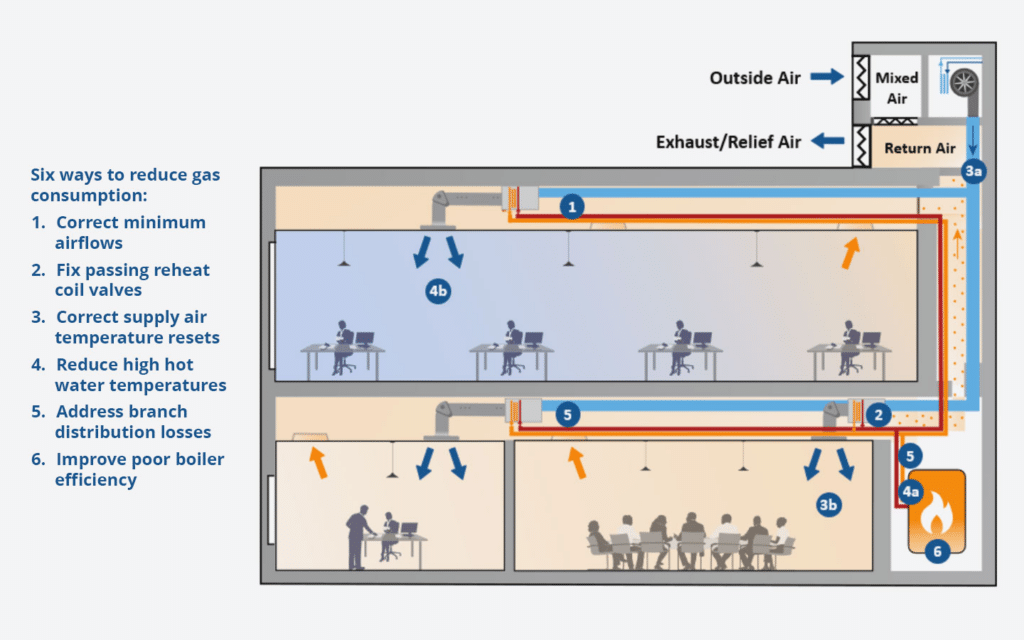Commercial buildings in the U.S. use natural gas for 32% of their energy needs, mainly for heating. However, most of this energy is wasted because of inefficient heating and cooling processes. In March 2024, a multidisciplinary research team led by the California Institute for Energy and Environment (CIEE) and the Center for the Built Environment (CBE) completed a three-year project commissioned by the California Energy Commission aimed at reducing the substantial energy consumption and associated emissions by large-scale commercial buildings that use natural gas for space and water heating. Drs. Paul Raftery and Carlos Duarte from CBE served as the principal investigator and postdoctoral scholar, respectively; Dr. Therese Peffer, the Associate Director for CIEE and the CITRIS Climate initiative, served as the project manager. Price Industries, Taylor Engineering, TRC, the Western Cooling Efficiency Center at UC Davis, and Genentech were key contributors.
The research team introduced a method called “Deep Decarbonization re-Design” to solve three main problems: reducing heating demand, reducing distribution losses, and correcting equipment sizing. They tested this plan in two San Francisco office buildings and demonstrated a 70% reduction in annual natural gas usage, providing approximately $110,000 in savings per year.

In addition to demonstrating deep efficiency improvements without the need for complete system overhauls, the project also produced a screening tool, a design guide, and policy recommendations to facilitate the adoption of these measures across different building types. With natural gas consumption comprising a large portion of CO2 emissions from commercial buildings, addressing issues in heating and hot water systems is key for both cost and emissions reductions. By focusing on deep efficiency measures rather than wholesale system replacements, the project offers a scalable and accessible solution to a pressing environmental challenge, adding a valuable tool to California’s emissions reduction strategies toolkit.
Visit the project website for more information, including a design guide, screening tool, and policy recommendations:
Reducing Gas Consumption in Existing Large Commercial Buildings

